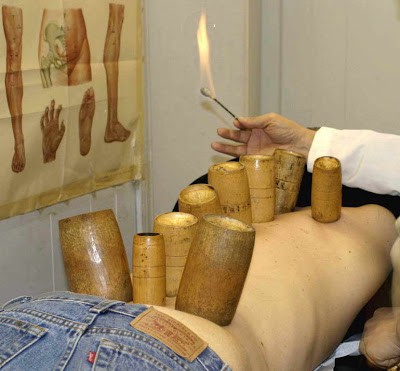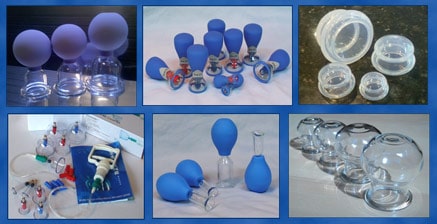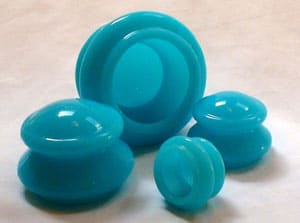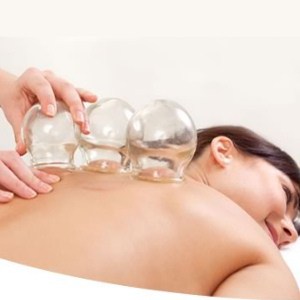 By Ross Ashcraft
By Ross Ashcraft
If you’ve never experienced Cupping, you just have to try it! It’s a great way to relieve stress and promote a healing response in your body. The body holds onto so much tension. This tension becomes fertile ground for all sorts  of conditions to take root. Tradition Deep Tissue or Trigger Point massage requires muscle and endurance to dispel this tension. Your therapist has to dig into your knots and break up the problems you have in your skin, muscle, tendons, and bones. Instead, Cupping draws the unhealthy tissue up and away from other fibers that it is attached to and inspires a faster tissue healing response.
of conditions to take root. Tradition Deep Tissue or Trigger Point massage requires muscle and endurance to dispel this tension. Your therapist has to dig into your knots and break up the problems you have in your skin, muscle, tendons, and bones. Instead, Cupping draws the unhealthy tissue up and away from other fibers that it is attached to and inspires a faster tissue healing response.
 Is this a new thing?
Is this a new thing?
Many celebrities have been “caught” recently sporting cupping marks on their back. But in fact, Cupping has been around for millennium. Most agree that is was a part of many ancient tribal cultures throughout the world. These cultures used horns, bones, hollowed nuts or gourds, bamboo, or even seashells to generate a
 great therapeutic effect in the body. In Egypt we can see Cupping being used in their hieroglyphic writings. Hippocrates, the famous Greek physician responsible for the Hippocratic Oath to which all doctors adhere, prescribed Cupping for many ailments. There is even written records from 281 A.D. of a Chinese alchemist Ge Hong using it in his practice.
great therapeutic effect in the body. In Egypt we can see Cupping being used in their hieroglyphic writings. Hippocrates, the famous Greek physician responsible for the Hippocratic Oath to which all doctors adhere, prescribed Cupping for many ailments. There is even written records from 281 A.D. of a Chinese alchemist Ge Hong using it in his practice.
 How does Cupping work!
How does Cupping work!
A Cupping therapist is attempting to pull out a variety of problems that the tissue could be holding. The cups are left in place or are glided over the treatment area. A variety of tools can be used, but the most common are silicone suction cups or glass fire cups. Once the cup is placed, the negative pressure created by the cup will inspire rapid soft tissue release. Therefore, instead of pushing the problem “In” we draw the problem “Out!”
What immediate results can you expect?
1) Pulls unnecessary toxins and metabolic wastes out of the body
2) Reduces stretch marks
3) Help clear up varicose veins
4) Relief in muscle tension
5) Reduction of knots and trigger points
6) Stimulate the lymph and cardiovascular system to promote health
7) Clears colon blockages when used in the abdominal area
 What long term problems can it affect?
What long term problems can it affect?
1) Asthma
2) Fibromyalgia
3) High Blood Pressure
 4) Anxiety and Fatigue
4) Anxiety and Fatigue
5) Headaches and Migraines
6) Neuralgia

Cupping is amazing and provides excellent relief to the client. It is additionally, physically less demanding on the therapist. Joy Dyer is a graduate of Community Care College massage. She received additional training from the International Cupping Association and is a practitioner in the Tulsa area. Here is what she has to say about her experience with Cupping:
“I read an article in Massage Magazine and knew I needed to incorporate it into my practice. Cupping allows me access to an angle I can’t get with tradition pressure massage…Some clients can’t handle deep tissue but actually need it. Cupping gives the effect of deep tissue without the pressure. My clients have less pain and feel more relaxed after cupping therapy.” Contact Joy at 9188332973 if you are interested in experiencing this great modality.
Question:
What is your opinion? Do you think we can change the body through something as simple as suction? Could it be that simple?
Find Us:
http://www.communitycarecollege.edu/ or
Facebook http://www.facebook.com/communitycarecollege
http://www.clarysagecollege.com/ or
Facebook http://www.facebook.com/clarysagecollege
References:
ross’sbrain.com









